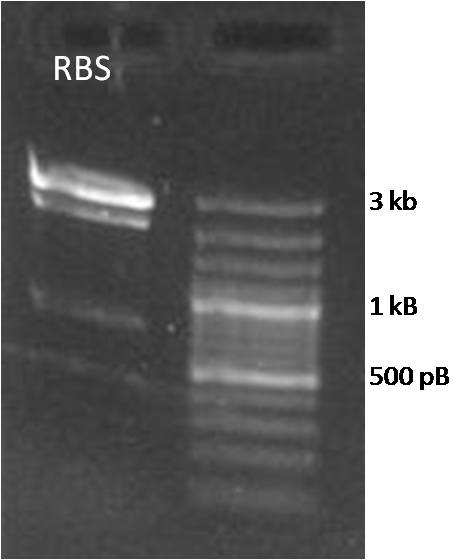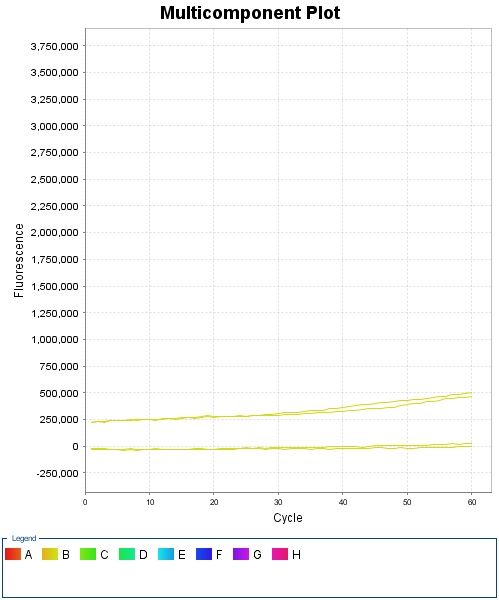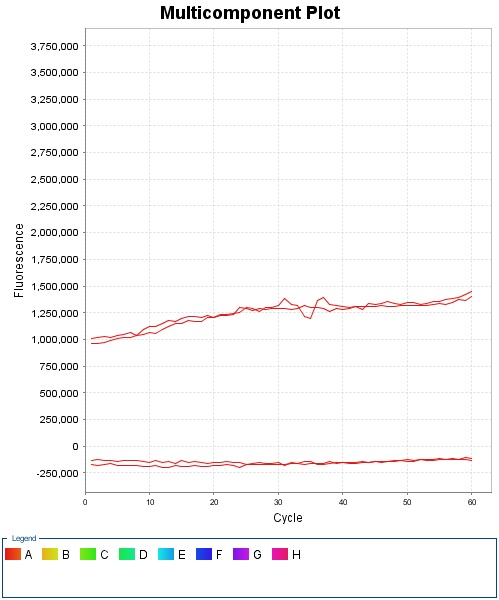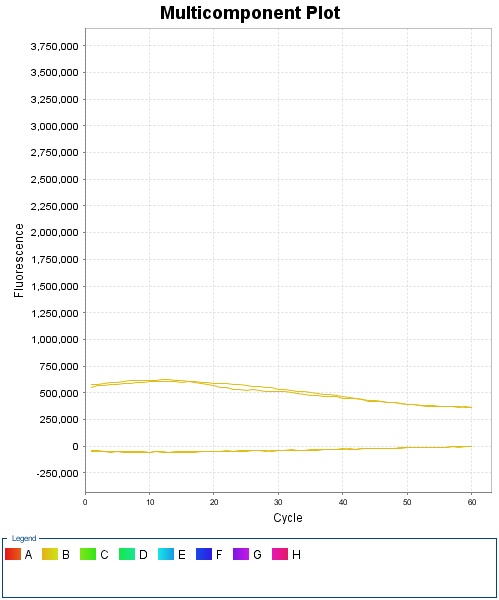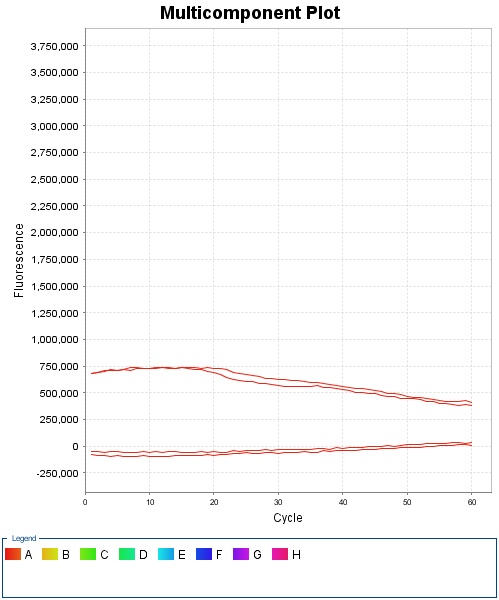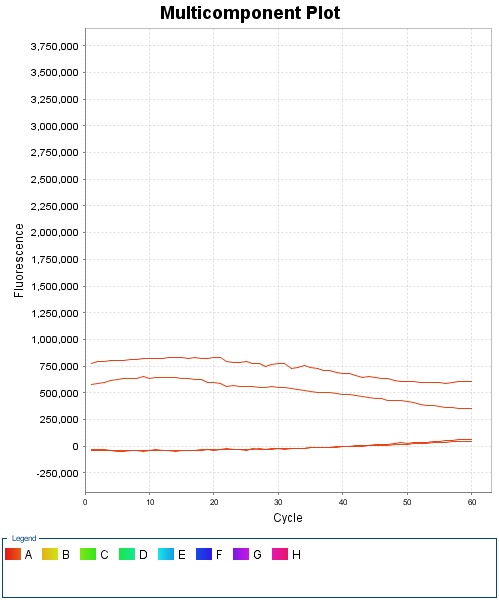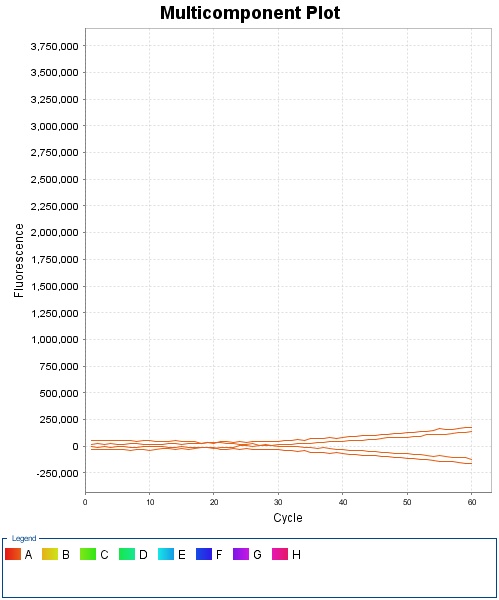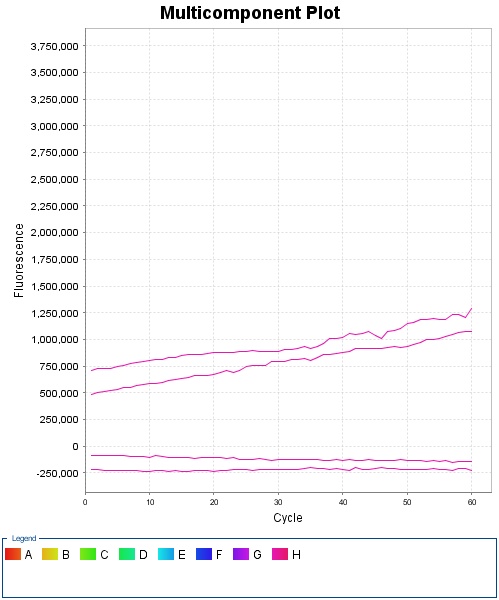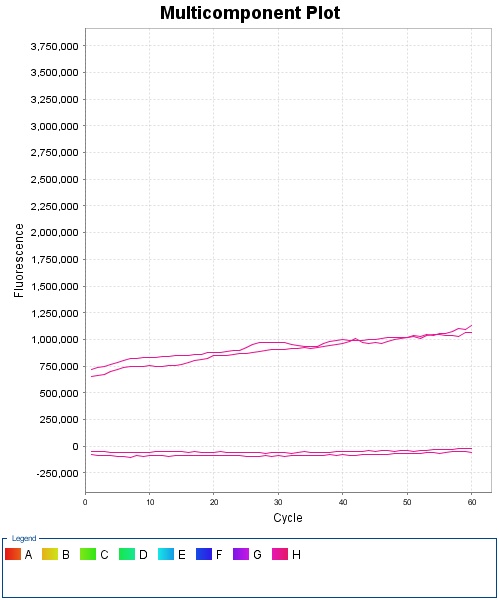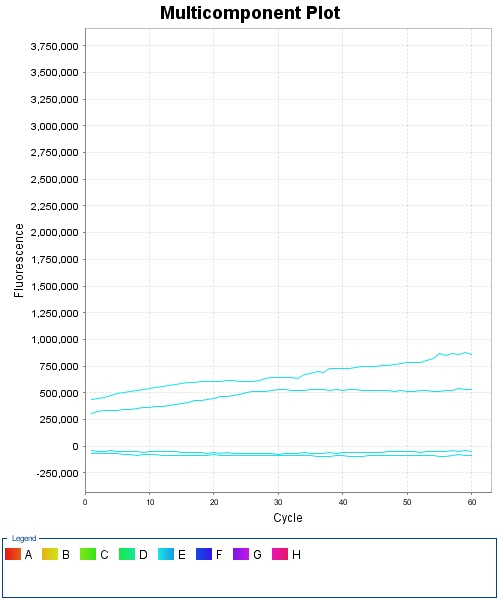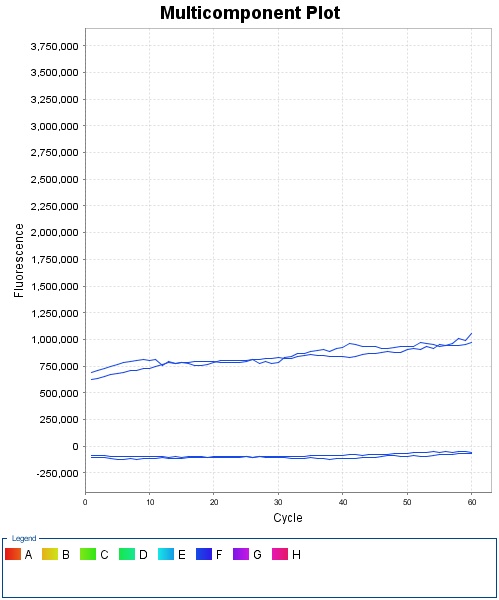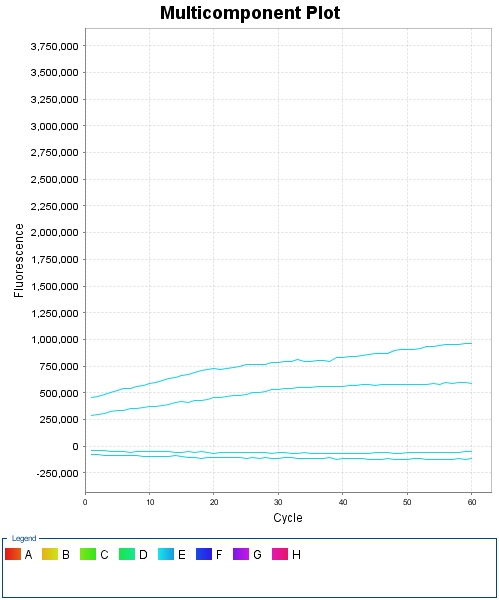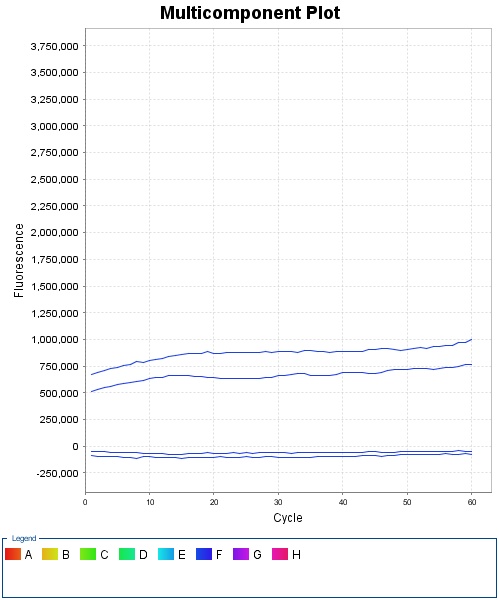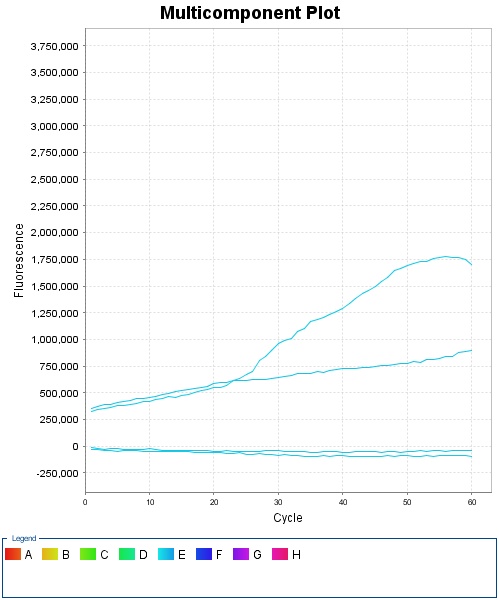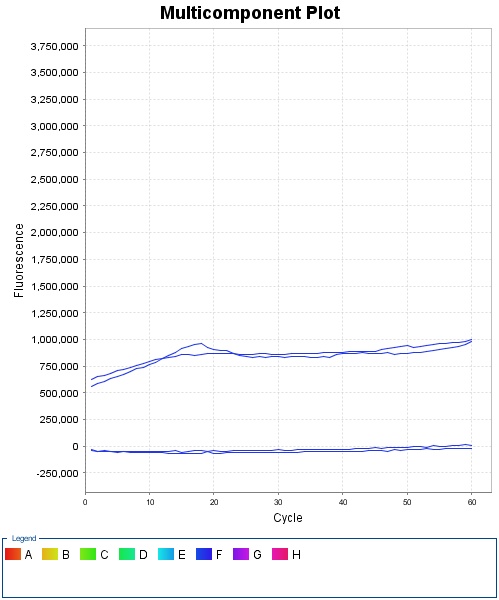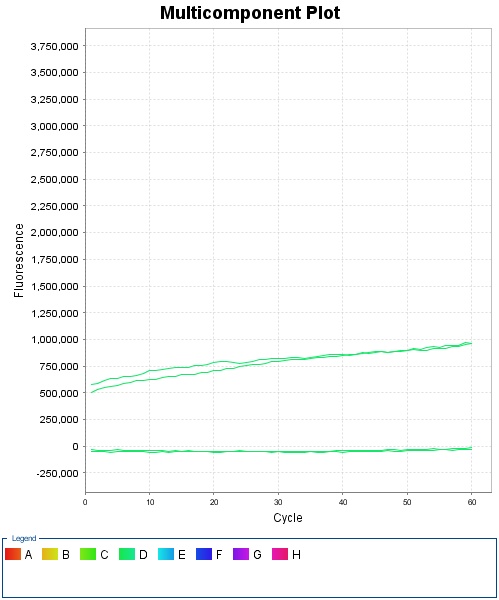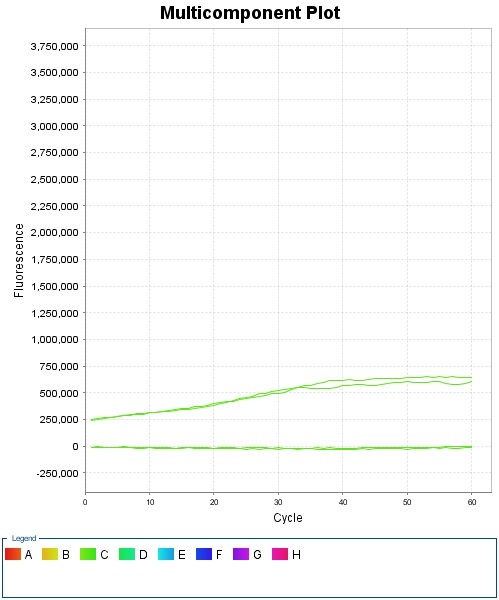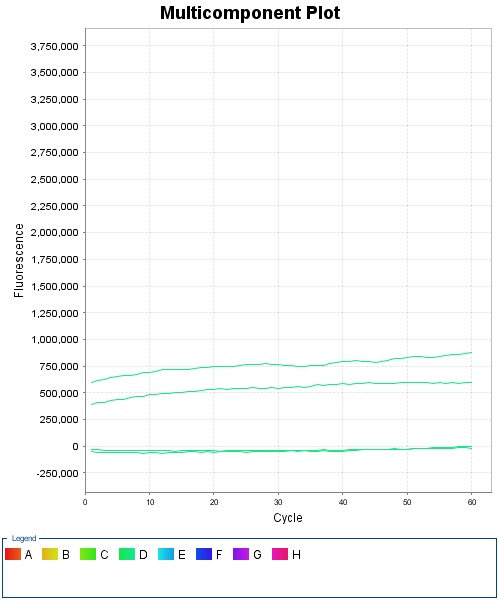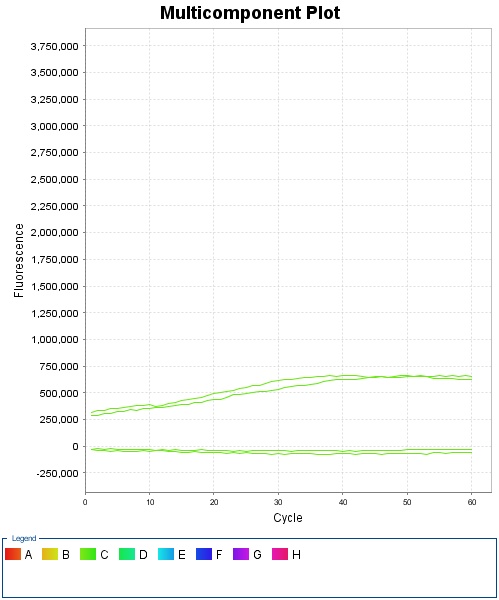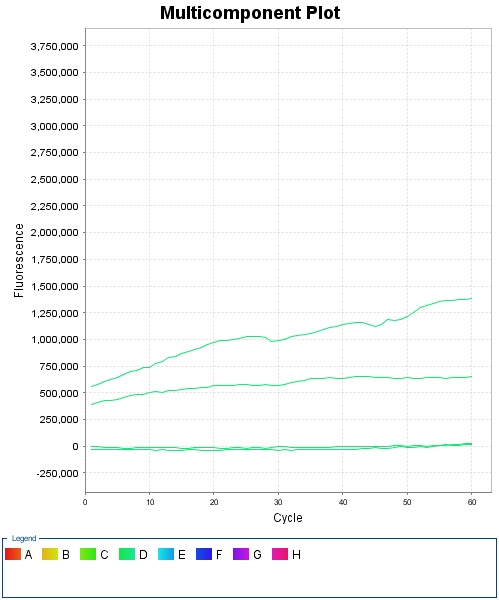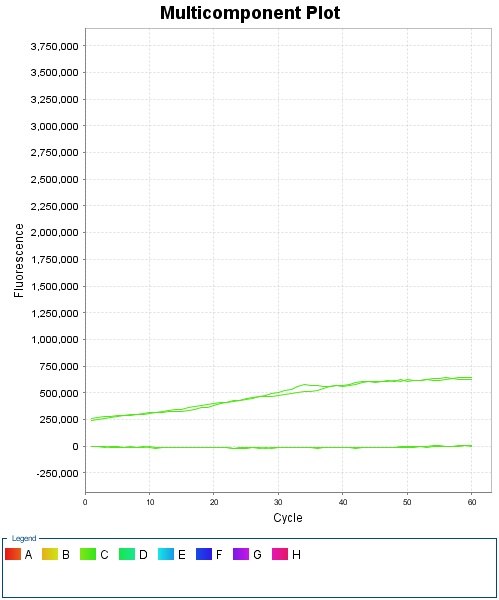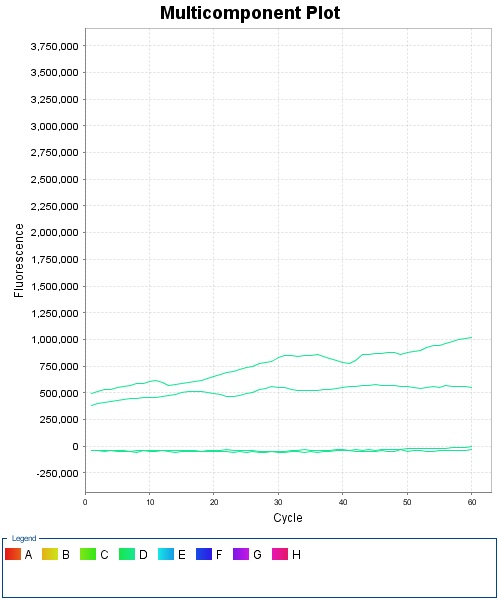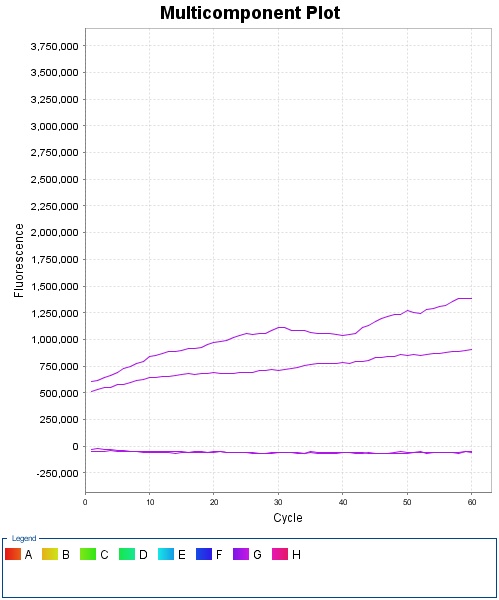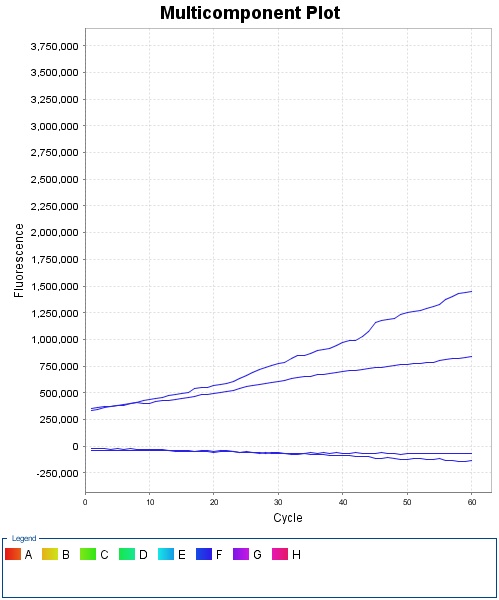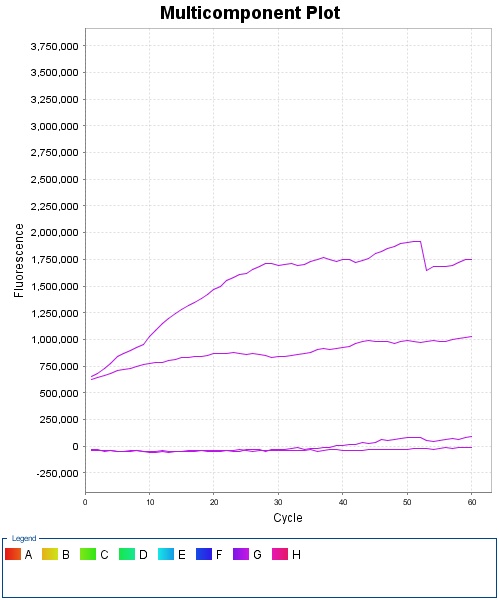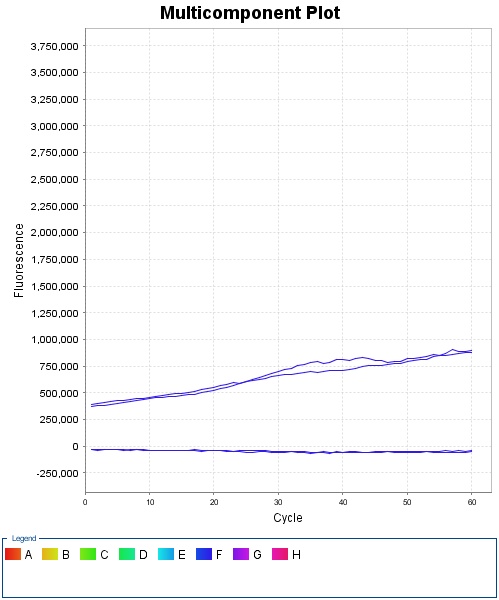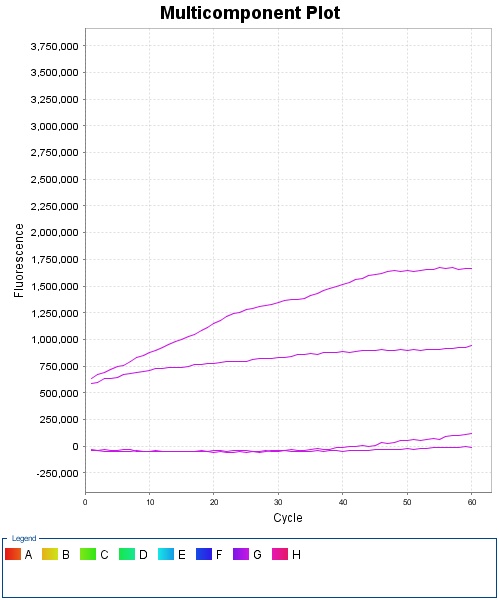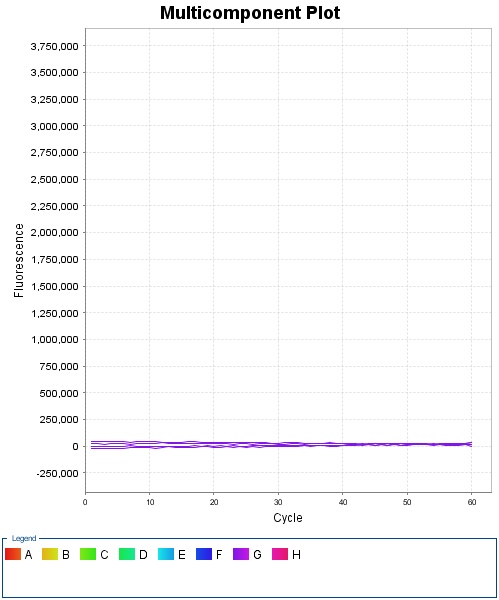EPF-Lausanne/9 September 2009
From 2009.igem.org
Contents |
Wet Lab
Culture
Made one new bottle of M9/min+AA+thiamine in 500 ml.
All clones (M9 & LB) have grown. M9 cultures have been redone in 25 ml M9 + antibiotics. 750 ul of overnight re-inoculated. Put in incubator at 37°C for 2 hours. We got different OD after this time, for RBS, LacI-RFP #1,2, RO2 #4,5,10, RO1 # 1,2,3. We normalized the OD to 0.06 for all of them by adding the appropriate amount of fresh medium to each erlen' (calculation was done linear).
Characterization
| With Atc | Without Atc | |||
|---|---|---|---|---|
| With Trp |
| 1/2 Trp 1 Trp 3/2 Trp | ||
| Without Trp | 1/2 Atc 1 Atc 3/2 Atc | Without Atc nor Trp |
50 ul of culture in each well.
Trp : 0.5 -> 1ul, 1 -> 2ul, 1.5 -> 3 ul.
ATC : 0.5 -> 0.5 ul (so about 50 ng/ml), 1 -> 1ul.
IPTG : 1x -> 5.5 ul -> 1 mM final.
Note : from the start of the induction to putting the plate in the machine, it took about 20 minutes (so some wells may already have been induced).
Results of the characterization
ALL OF THIS HAS TO BE ANALYZED
For the RBS :
RBS was our negative control. We can see that there is no RFP fluorescence (because of course RBS has no RFP gene).
For LacI-RFP 1 + IPTG :
LacI-RFP 2 + IPTG show the same tendancy.
The aim of this experiment was to see the maximal level of RFP that could be expressed. For that, we put some IPTG to induce the LacI-RFP gene. But it doesn't look like what we would have expected, the level of RFP is really low.
For Read Out 1
RO1#1 without TRP:
Without any tryptophan, the system should be on : TrpO isn't repressed so RFP is expressed. Here we can see that without TRP the cells express some RFP fluorescence.
Clone #2 has the same behaviour :
This clone seems to work as well if we compare this graph to the one with TRP. We have the same results as for RO1#1.
RO1#1 + 0.5 TRP :
In comparison to RO1#1 without TRP, if we add some TRP, there is a significative difference. TrpO is inhibited and RFP isn't expressed any more. We can see here that our system seems to work, so RO1 is characterized.
RO1#2 + 0.5 TRP shows the same tendancy :
RO1#1 + 1 TRP :
Again, RO1#2 clone has the same behaviour :
RO1#3 clones doesn't follow these tendancy. It actually seems that this clone isn't working at all. It is possible a spontaneous mutation occured in some place... On all different conditions, RO1#3 clones show a flat curve, like RBS. It doesn't express RFP which means either our construct wasn't inserted, either there has been a mutation in it. For example + 1 TRP :
For Read Out 2
RO2#1 without TRP :
RO2#3 has exactly the same curve shape :
RO2#1 + 0.5 TRP :
RO2#3 has a more "normal" shape :
RO2#1 + 1 TRP :
RO2#3 is the same :
RO2#1 + 1.5 TRP :
RO2#3 in the same conditions :
RO2#1 + 0.5 TRP + 0.5 ATC :
RO2#3 in the same conditions :
RO2#1 + 0.5 TRP + 1 ATC :
RO2#3 in the same conditions :
RO2#1 + 1 TRP + 0.5 ATC :
RO2#3 in the same conditions :
RO2#1 + 1 TRP + 1 ATC :
RO2#3 in the same conditions :
RO2#1 + 0.5 ATC :
RO2#3 in the same conditions :
RO2#1 + 1 ATC :
RO2#3 in the same conditions :
RO2#1 + 1.5 ATC :
RO2#3 in the same conditions :
Clone RO2#2 is not working, it has always a flat curve like this (for ex +0.5 ATC):
Glycerol stsock
We were afraid some old glycerol stocks were destroyed, so we did some new.
Strains
We received some TRP KO strains. We will grow them overnight. We grew them in 500 ml erlen and add of 75 ml of LB. 3 strains : JRG1046 5992 (no antibiotic), JRG465 4456 (no antibiotic), JW4356-2 11110 (it is supposed to be Kana resistance but we are not sure so we did part in no antibiotic and part in 450 ul Kana).
Microscope experiment
Clones tested : RO1#1 (+/- TRP), RO1#2 (+/- TRP), RO2#4 (nothing, +TRP, +ATC) in M9.
TRP : 300 ul, ATC 60 ul.
The idea is to put 0.200 ul of the appropriate tube on microscope cover and cover it with another cover.
- A person takes a picture every 20 minutes for 2 hours
- The pictures were taken with an epifluorescence microscope (Nikon Eclipse Ti)
- The magnification used was 20X and the filter used for the fluorescence was Texas Red
At the beginning, do in 3 ml tubes with culture (about 0.2 OD) + appropriate inducer (in between the pictures, put the tubes back in the incubator at 37°C). So we redo the microscope slides every 20 minutes, otherwise the cells would die on the slides.
Results
We took a picture for each clone and each condition evey 20 min. The pictures were looking like this one

Then, we used the software ImageJ to measure the fluorescence of single cells. 10 fluorescence measures were taken for each picture. We substracted the basal fluorescence of each picture. Using excel, we obtained the following graphic (for RO1.1 in its 4 different conditions)
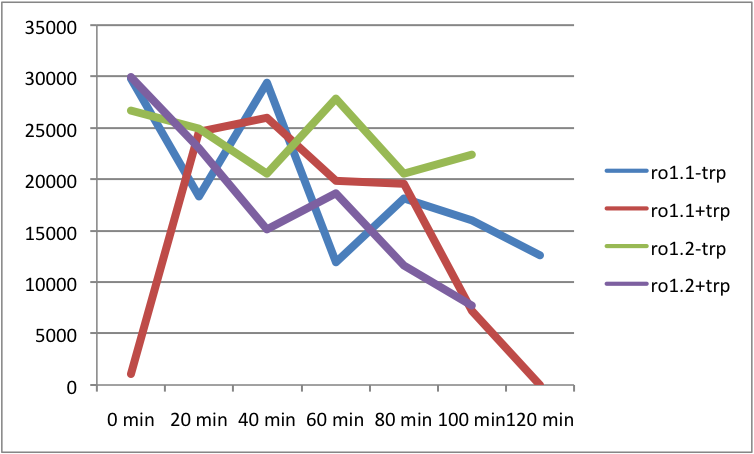
From this we can actually say that this method is not very conclusive. Indeed there is no correlation between the curves, and the fluorescence is fluctuating way too much to be "biological" fluctuations. But, these results are not that surprising, considering the method we used. The fact of using new cell for each new picture couldn'd guaruntee us that the conditions were exactly the same. Indeed, there might be big fluctuations from one cell to another. In the second place, the focal plane for taking the picture couldn't include all cells. Therefore, some cell do appear "fuzzy" although they might have a correct fluorescence. All these parameteres may have influenced the measures and give these strange results.
To have more accurate results, we should be more systematic in the measurments and maybe instead of using this method, use an agar pad experiment were the cells would grow under the microscope, making sure we can always monitore the same cells.
Cultures
-> in M9 (3ml + antibiotics). We did the following cultures : RO1#1,2, RO2#4,5,10 and some double constructs : RO2+BB#3, RO2+BB#8, RO1#2+BB5#3, RO1#1 +BB1#1, RO1#3 + BB3#3.
People in the lab
Mélanie, Caroline, Basile, Nicolas


 "
"

